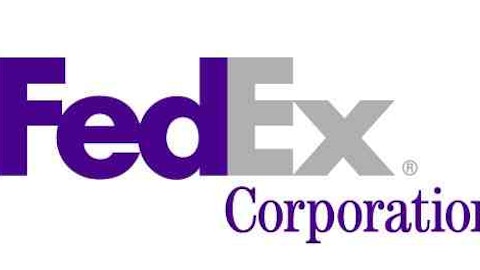Kirby (NYSE:KEX), a $3 billion market cap company, provides inland marine transportation of chemicals, oil products, and other liquids with its fleet of over 800 tank barges. The company posted strong earnings on Thursday morning- missing revenue but increasing earnings per share by 10%, above analyst expectations- and the stock finished the day up 14%. Before, Kirby had been down 28% for the year and could have been considered a buy based on its solid fundamentals.
As a transportation company, Kirby’s business does generally depend on macro level economic activity to generate demand for its services. Low demand results in both lower dayrates for its fleet and also in lower utilization (the percentage of its assets which are actually operating, earning dayrates and accumulating operating costs). However, because Kirby’s river transportation is more used for hauling chemicals and other industrial products, it is not as other transportation companies; its market beta is just above 1. Therefore, on a statistical level, a stock market decline would not be expected to tank the stock.
The quarterly results saw Kirby’s inland tank barges with utilization in the 90 to 95% range, a strong positive sign. Dayrates and implied dayrates on term contracts have also increased, indicating that despite questions about U.S. economic weakness Kirby is still encountering a high level of demand. The company’s business suffered a small amount due to drought conditions in the Midwest that reduced river drafts, but it is unlikely that this will affect Kirby much in the long term. Kirby’s trailing price-to-earnings ratio now stands at 15, with optimistic analysts assigning it forward estimates that imply a forward P/E of 13. One concern for value investors is that the price/book ratio, which would tend to be closely watched for an asset-based company, is 1.8. There has also been a fair amount of insider selling at Kirby, but not enough to be worrisome, as there are many reasons why an insider might choose to sell stock and the sales which occurred took place months ago when the stock was above $65.
Some hedge funds had bet big money on Kirby by the end of the first quarter and, while they have posted paper losses since that time, are poised for any continued turnaround in the stock. Select Equity Group, managed by Robert Caruso, has been invested in Kirby for over a year and owned 3.1 million shares at the end of March according to the fund’s 13F (see other favorite stocks from Select Equity Group). Chuck Royce’s fund Royce & Associates owned 1.6 million shares, which made for a position worth just over $100 million at the time.
Kirby’s two closest peers, American Commercial Lines and Ingram Barge Company, are both privately owned following American Commercial Lines’s buyout by Platinum Equity in 2010. Most public shipping companies operate in blue-water areas, but make for the best available comparisons to Kirby. Hornbeck Offshore (NYSE:HOS) primarily operates offshore supply vessels but also has a tug and tank barge fleet. Hornbeck, which has a $1.5 billion market cap, trades at 14 times forward earnings and 1.3 times its book value. Tidewater (NYSE:TDW) is almost entirely an offshore marine services company, trading at book value and at 9 times its forward earnings estimates. Finally, Seacor Holdings (NYSE:CKH) is a diversified marine transportation and services company but includes a Marine Transportation Services segment that also transports petroleum products and chemicals. Seacor also trades at book value, and has trailing and forward P/E ratios of 29 and 11. We do not particularly like any of these peers, but at the same time they tend to compare somewhat favorably on a value basis to Kirby. We would say that the value opportunities at the tank barge operator have largely slipped away.

